
Come and discover the “Historical Portugal” - following routes that we’ve prepared for you. Over the centuries, this zone - the cradle of Portuguese identity – has served as a vital cultural crossroads and the setting for key historical facts.
Come and discover the “Historical Portugal” - following routes that we’ve prepared for you. Over the centuries, this zone - the cradle of Portuguese identity – has served as a vital cultural crossroads and the setting for key historical facts.
Our Itinerary continues for North Alentejo. This is the 'land of marble', an authentic natural museum. You will realize why as soon as you see the impressive quarries and pass through these towns, where palaces and churches, manor houses and simple dwellings, and even taverns and pavements, are covered with marble. Begin your tour in Estremoz, a town with delightful baroque features. Walk through the lanes of the medieval area around the castle and appreciate the craft of the stonemasons in their workshops. Then go on to Borba, where the pride of the area is the stylish Fonte das Bicas (fountain), and, after a walk through the marble-lined streets, sample some tasty appetizers and the good regional wine in one of the many typical taverns. In Vila Viçosa, notice the marble on the façades of the churches, the imposing ducal palace, the Convento dos Agostinhos and the Convento das Chagas. Take the chance, too, to learn all there is to know about marble at the museum of marble, situated in a disused railway station.
Continue for the Centro of Portugal and to the land of “Aldeias Históricas”. Built from granite and schist, and located in the heart of the country, they have witnessed over 900 years of Portuguese history. But while the villages are amazingly peaceful places to visit, they have not always been so tranquil. In the past these villages, perched high on hilltops, played a crucial role in protecting the surrounding lands. Their vantage point made it almost impossible for would-be invaders to approach undetected. It was a hugely effective form of defense. Over the centuries, Moors and Christians, Spaniards and Portuguese, have all tried to take the villages for themselves.
The Centro de Portugal was favored by the Romans for the purity of its waters and it was that here they built spas for the treatment of bodily and spiritual ailments. The spas of São Pedro do Sul, are one of the most well known. Round off your health and beauty treatment with the peace and quiet offered by the green countryside and the mountains. Viseu, Coimbra and the Serra do Buçaco hills are ideal for excursions by car if you have a free afternoon. Give yourself all the rest you deserve, combining the healing power of water and the peace of mind provided by a stay in Solares de Portugal.
Continue our journey to Douro, classified as a world heritage site by UNESCO, the wine-growing Upper Douro produces the famous port wine, known worldwide for its quality and taste. In this region - the first one in the world to be demarcated - the centuries-old tradition of wine growing has produced a cultural landscape of remarkable beauty. You can take in all these riches on a short five-day trip, and staying the night in a manor house with a unique atmosphere that is also part of the Port Wine Route.
After Douro, visit the capital of Trás-os-Montes in the far north-east of Portugal. Discover the strong personality of this city standing proud on the banks of the rivers Corgo and Cabril. The first things you’ll notice when you arrive in Vila Real are the attractive residences rising above the surrounding countryside. Between the 17th and 19th centuries, many noble families built homes here. To this day, stone coats of arms can still be spotted on the exteriors of these houses. Tour the city and its medieval centre where the first people to arrive here set up home. Head on through the oldest part of the city.
Travel along rivers and across rolling green hills and finish in Viana do Castelo, beautifully situated at the mouth of the river Lima. Explore the routes that lead down to the mouths of the rivers Minho, Lima and Cávado. Tour the hills and mountains before descending to beautiful towns by the sea. Viana do Castelo is one such place. The Santa Luzia hill is the symbol of this city. Climb it and enjoy the wonderful panoramic views over the Lima, the sea, the hills behind, and the rooftops of Viana below. The hills of Soajo and Peneda are well worth a visit too. Discover their villages, agricultural traditions and rural ways. You can even spend the night in a converted village house.
And before you leave, be sure to spend some time admiring the north-easterly region of Portugal. The towns of Ponte de Lima, Caminha, Valença, Monção, Melgaço and Paredes de Coura are all wonderful.
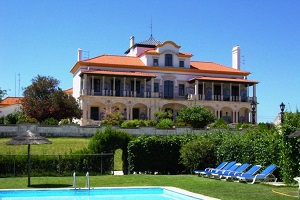
Palácio de Rio Frio was built at the beginning of this century. At the time it was one of the biggest estates in the country mainly producing wine. The house is decorated with fabulous tiles. They illustrate the rural communities at work, in particular the wine making. In the main lounge the wall are completely covered with colourful tiles typical of the Ribatejo Region. The house is surrounded by a beautiful garden and its standing in the middle of a small wood creating a peaceful atmosphere.
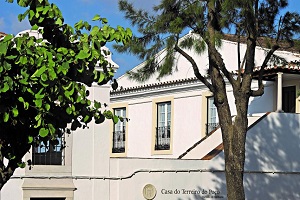
Casa do Terreiro do Poço an 18th century manor house, is located in the historical centre of Borba, next to the Largo dos Combatentes Garden. The main house comprises three buildings that integrate the façade and two contiguous cottages, forming a unique architectural set. Tastefully restored, its decoration combines the classic with the contemporary. The furniture from Portugal, Asia and Africa provides you comfort and it’s a true example of how the Portuguese meet with other cultures of the world, throughout their History.
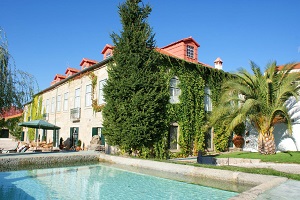
Located in the mountains of Serra da Gardunha and Serra da Estrela this manor house dates from the 18th century. It was dedicated to the kings of Portugal - D. Afonso IV to D. Maria I. Very recently the owners reconverted the whole house with modern comforts while maintaining the genuine atmosphere of a traditional stately home. Casa do Cimo has a homelike spirit. It is the ideal place to rest, to walk, to hiking and to do Mountains Sport.
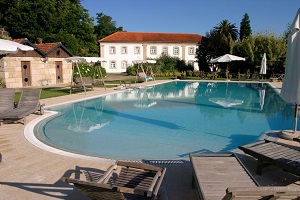
A manor house from the 18th century (1778), near the spas of São Pedro do Sul this is an excellent refuge for those who wants a peaceful vacation in harmony with health and nature. It was the main house of 1st Viscount and 1st Count of Beirós. The present owner has restored this stately home, maintaining the original characteristics and it is decorated with taste and elegance. A collection of vintage cars and boats are the passion of the owner who is pleased to share with his guests. The nature that enfolds this space is extraordinary and it invites walks to discover the grounds and the gardens.
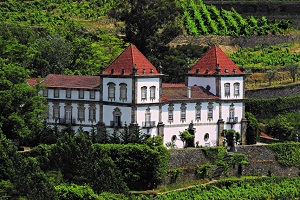
The balance between the profile of the house of Torres de Oliveira, and richness of its granite freestone, endorse it as a magnificent manor from the beginning of the 18th century, in the region of the Douro. It was built in a carefully selected area, which not only allowed it to head a vast farming estate of 30 ha producing Port Wine, but also enjoys a beautiful landscape, in which the Douro River winds slowly down towards the sea.
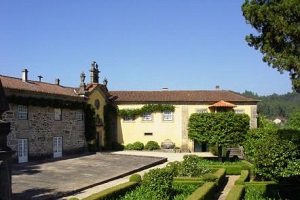
The Casa de Canedo is a country manor house build in the 17th century, which was and still is the focus of an agricultural and forestry operation that extends over approximately 90 acres. Located in the Basto region, an area famous for its beautiful countryside and its wines, it is equidistant from the villages of Cabeceiras de Basto, Celorico de Basto and Mondim de Basto, each them the administrative centre of a municipality. The house is situated in a peaceful valley, about 500 metres from the road, between Fermil de Basto and Arco de Baúlhe. It looks out on the mountains of the Serra do Marão which rise up on the other side of the Tâmega river to the high peak of Senhora da Graça.
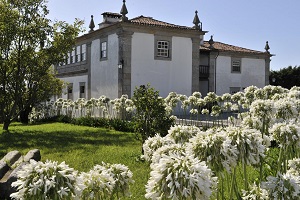
This manor house was built in the 16th and 17th centuries by the Cunha Lobo Barbosa and Sottomayor family just 1 km from the sea. In 1820, the Genoese Judge Luigi Vital Monteverdi married the owner of the estate and the house became to be known as Quinta do Monteverde. The manor house was completely renovated but the interior retains the touch of the seventeen hundreds. Quinta de Monteverde is a walled estate between the hills and the sea and close to the river mouth. In Castelo do Neiva, the sandy beach rolls on and on; sand dunes and unspoilt stretches lend a wonderful sense of isolation to the surroundings.
This will be replaced with the Google Map.